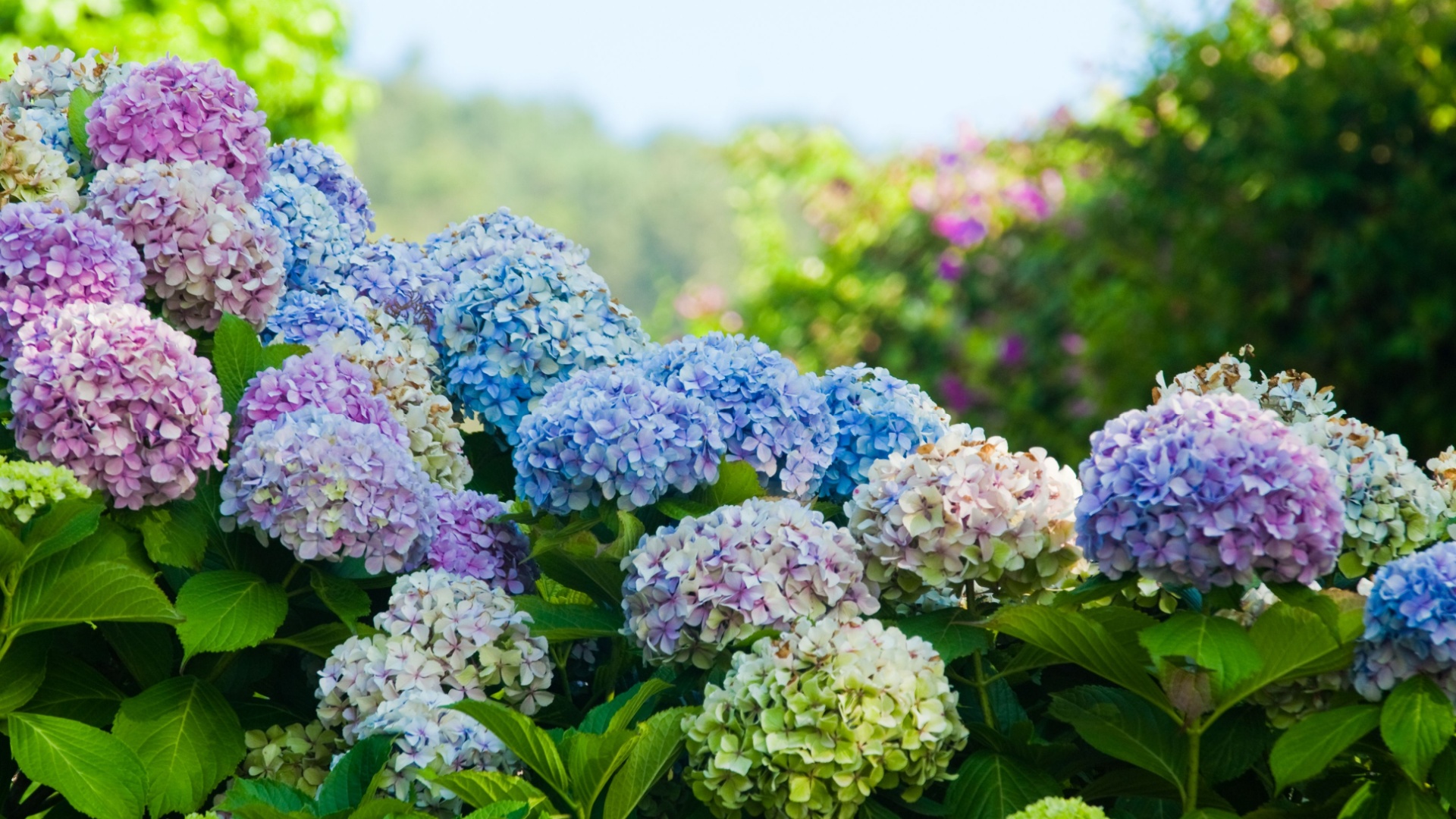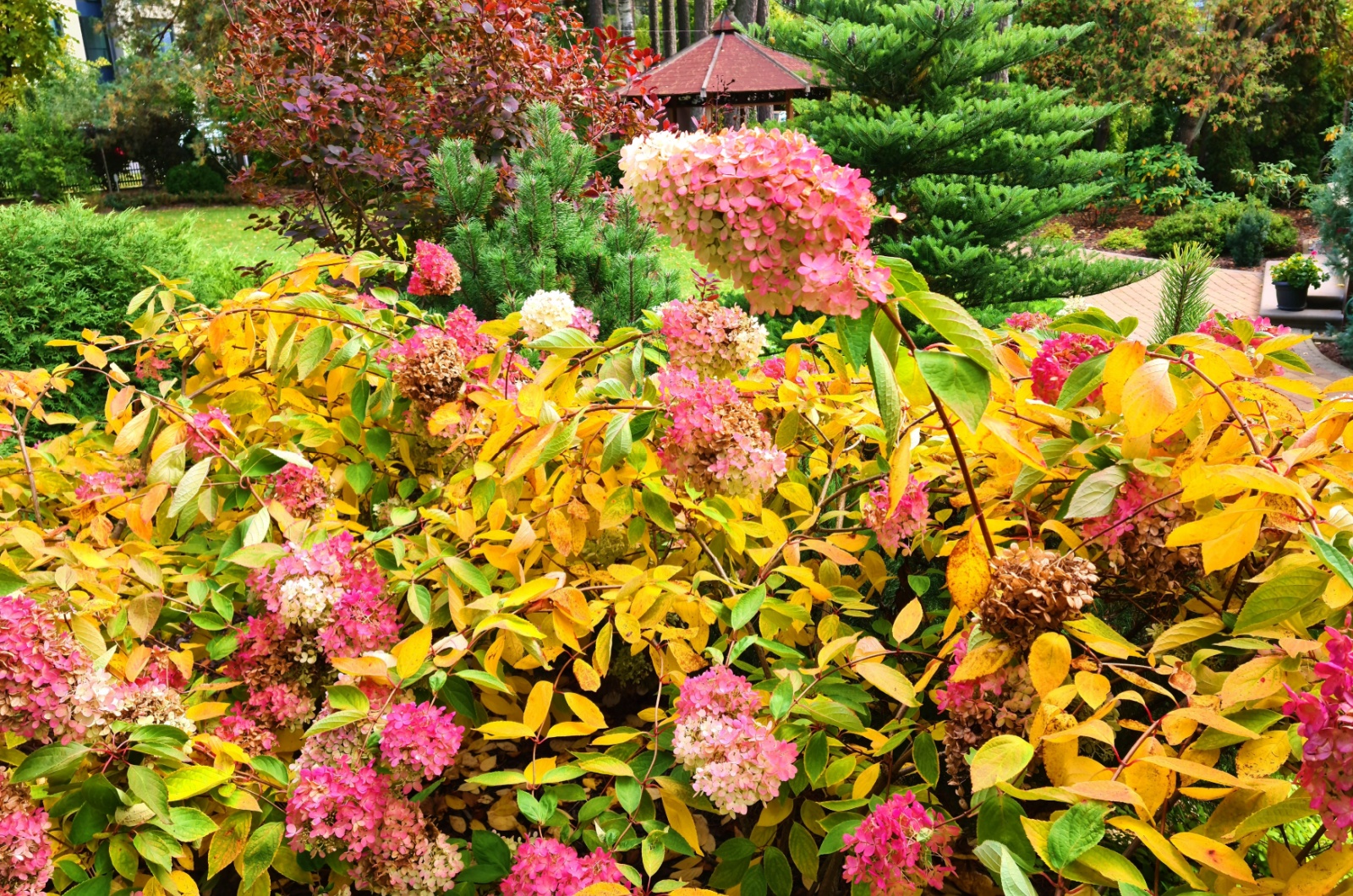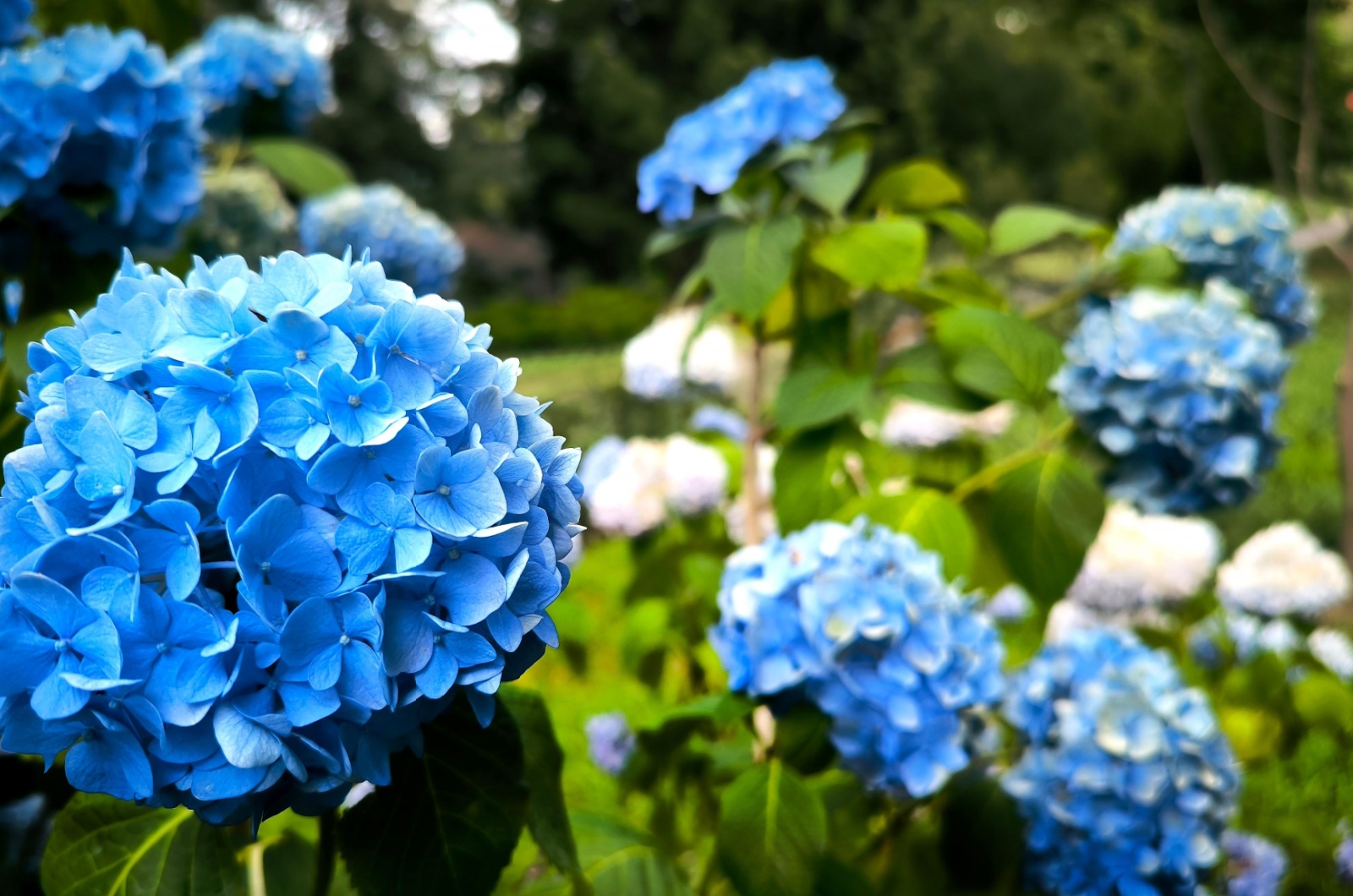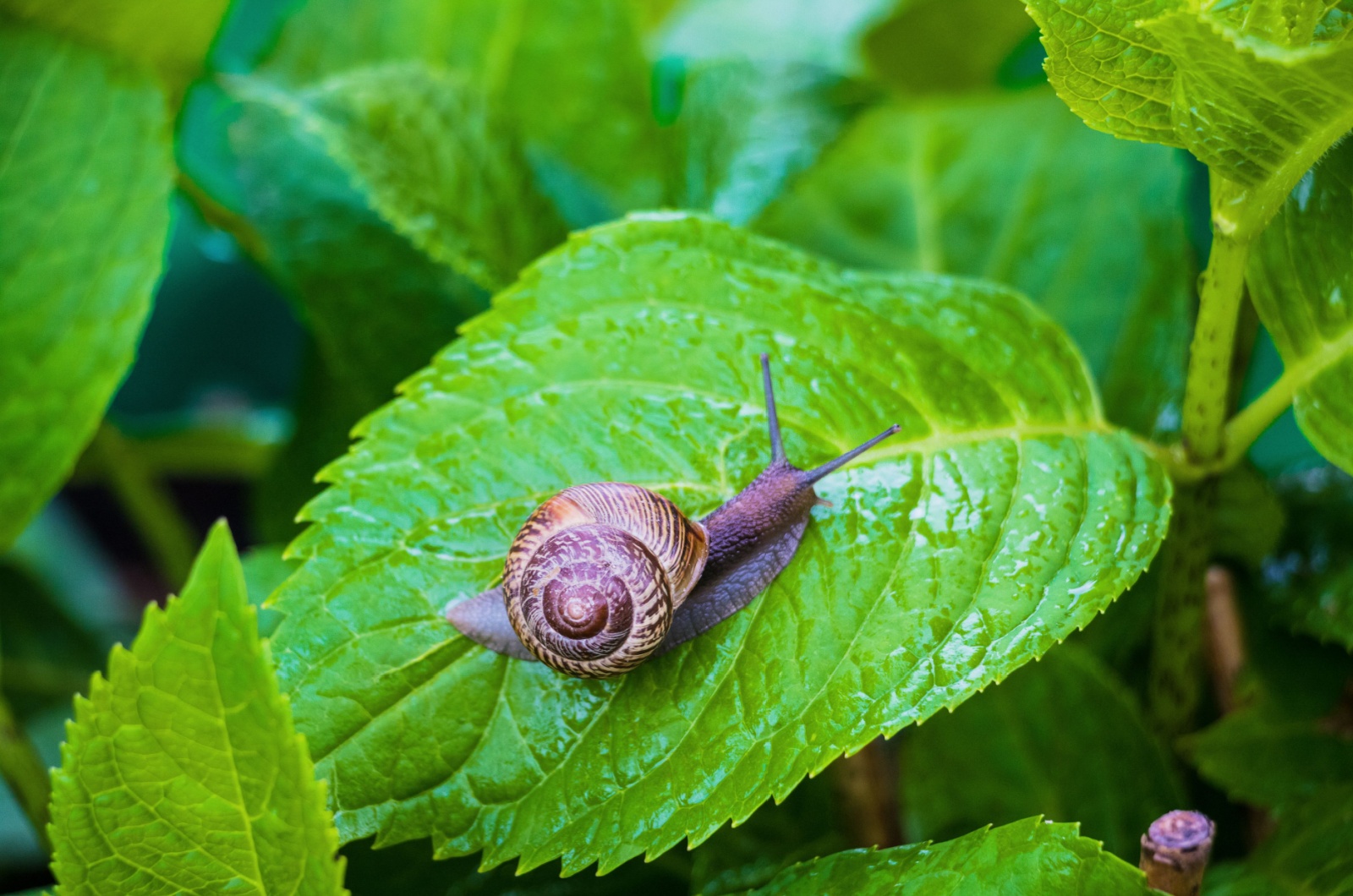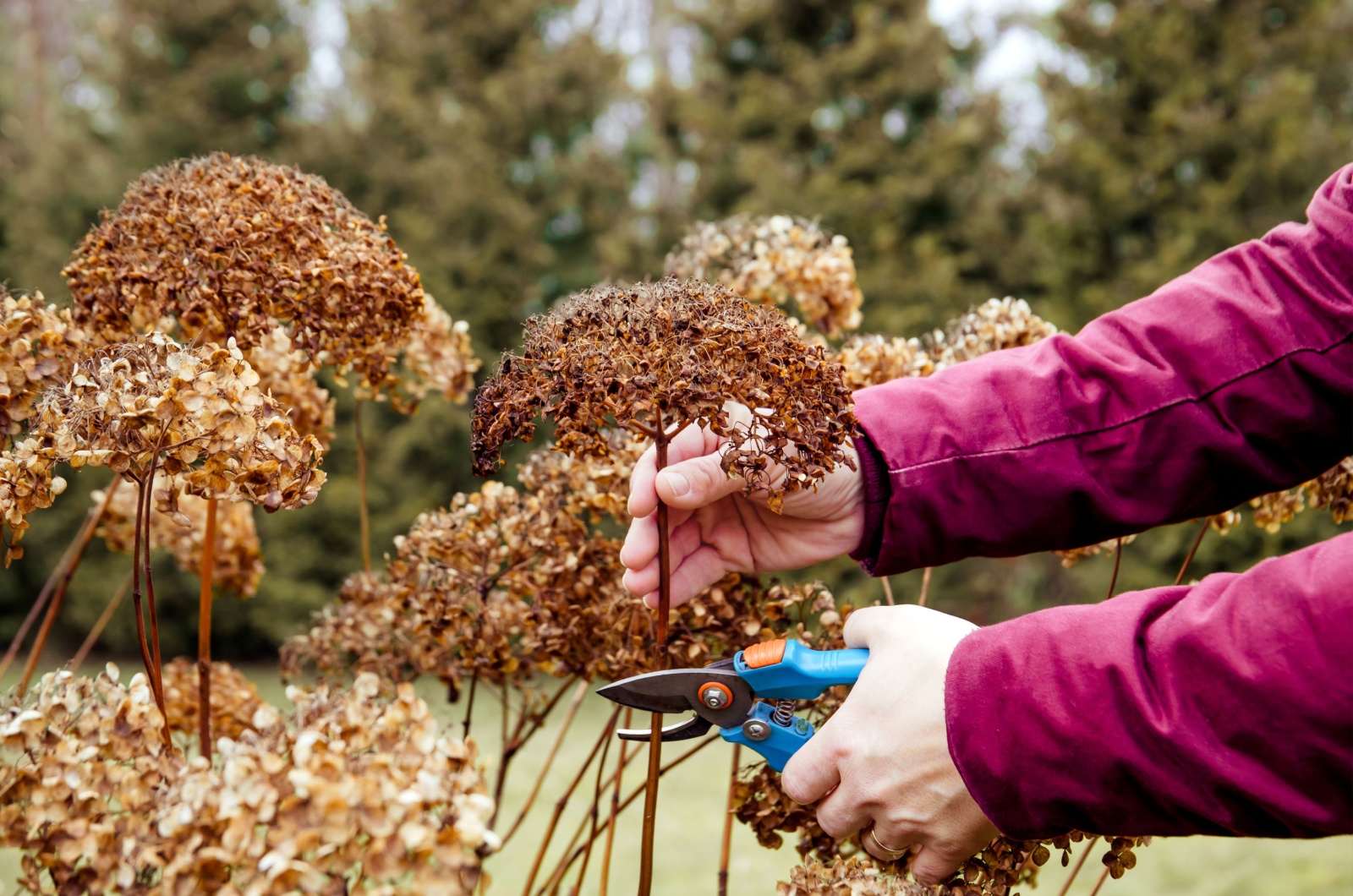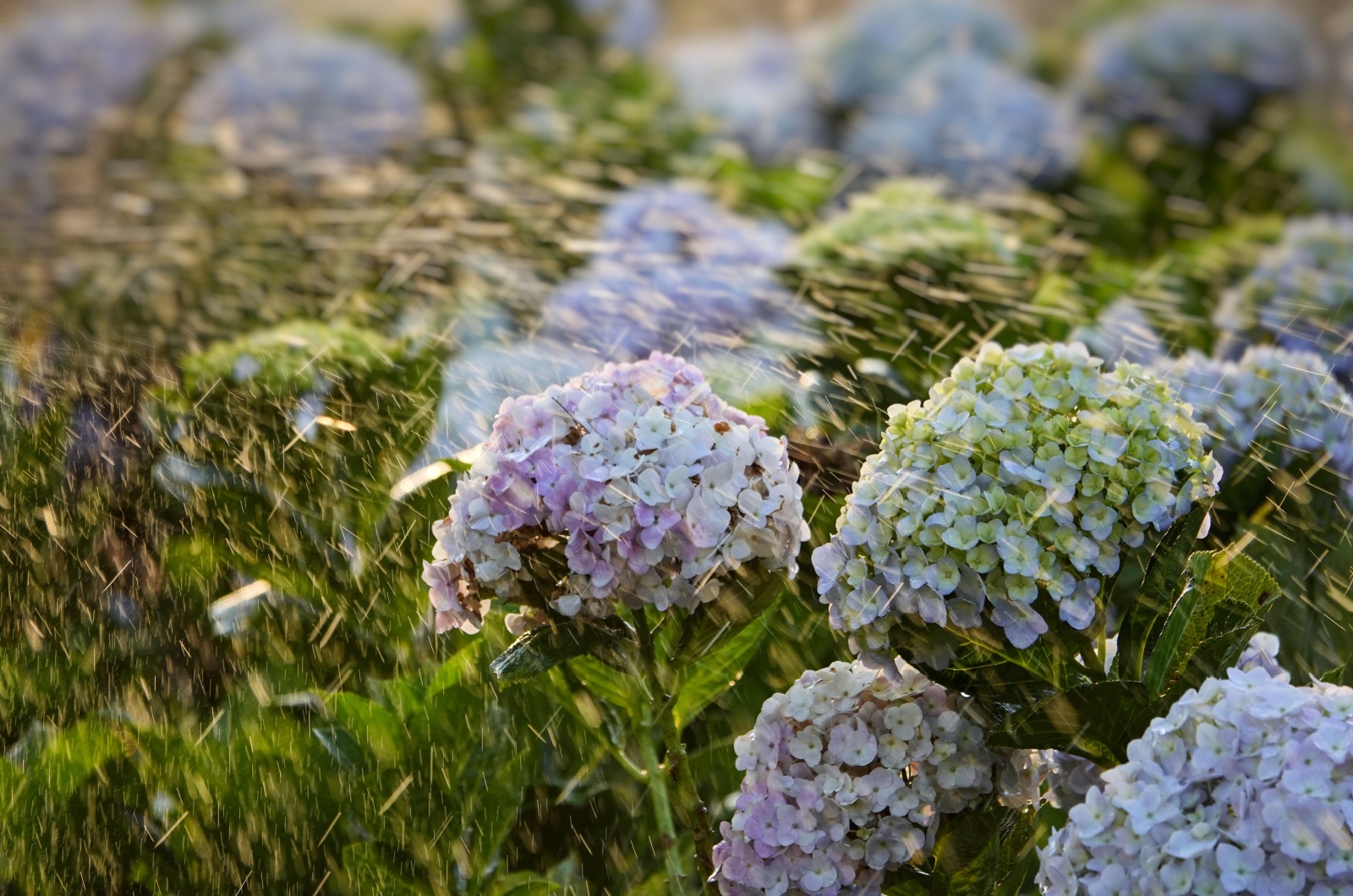I think that we can all agree on one thing – hydrangeas are the most beautiful shrubs! Their big colorful blooms with spectacular green leaves can bring elegance into your garden year after year.
If their stunning appearance has already caught your attention, then you must be thinking about planting them! Now, you’re probably wondering whether hydrangeas are easy to plant or if it’s a more challenging task.
Let me start from the beginning. When I planted my very first hydrangeas, I thought that they were easy to plant…but little did I know! After I finished planting, everything went downhill.
The next day, I went to visit my sweet little hydrangeas with a big smile on my face, not having a clue what had happened! They didn’t look good. As the days passed, my hydrangeas started getting weaker and weaker.
That’s when I started searching for answers to figure out what went wrong. The reasons my hydrangeas almost stopped blooming were all the mistakes I had made!
So if you’re already ready to plant your hydrangeas, stop right there! First you’ll need to take a look at all the mistakes that can happen and how to easily avoid them.
#1 Stop Overfertilizing Your Hydrangeas
Most gardeners think that fertilizing hydrangeas more often leads to big and strong blooms. This can work for other plants, but for hydrangeas, too much fertilizer can have the opposite effect!
So the first mistake that you can make while planting hydrangeas is applying fertilizer excessively! When using fertilizer weekly, hydrangeas will actually produce flowers more slowly. That sounds terrible, I know! So, what’s the solution you may wonder?
If you want to get more colorful blooms, then you’ll need to fertilize them in the spring and then again in the summer when they start blooming! Stick with this schedule for fertilizing, and you’ll be surprised at how wonderfully they will thrive.
#2 Yellow Leaves Can Be A Sign Of Overwatering
Hydrangeas can be tricky when it comes to watering! Water them too much and they will end up with yellow leaves and root damage. On the other hand, if you don’t water them as you should it can cause stress and lead to another problem – diseases!
How can you avoid this mistake? There’s one great rule you should know about that can help you avoid overwatering your hydrangeas! All you need to do is stick your finger into the soil at the base of the hydrangeas. If it’s dry, go ahead and water them.
I usually water my hydrangeas every three days, which gives me the best results!
#3 Be Careful Where You Place Hydrangeas When Planting
Should you plant hydrangeas in the sunny part of your garden or do they prefer full shade areas? That’s the question that sparks many gardening discussions! All of you know that hydrangeas are shade-loving plants, but do they really need to be placed in this area?
The answer is…drumroll, please! No, your hydrangeas still need some sunlight to thrive (not too much, though)! Every plant in your garden, just like hydrangeas, craves a little sunshine! Sun is actually one of the main characters that plays an important role in helping flowers grow.
You’ll need to plant hydrangeas where they will get some morning sun and afternoon shade. That’s actually the reason behind the beautifully blooming hydrangeas of many gardeners.
#4 Overwintering Hydrangeas Is A Must
Soon your garden will be covered with a white blanket, which means it’s time to prepare your outdoor plants for colder temperatures! Your hydrangeas also need overwintering. If you leave your hydrangeas outside in the winter, they will freeze!
If you already planted hydrangeas in containers, all you have to do is move them in the garage over the winter!
But what to do if you’ve planted them in the ground? Don’t worry, I’ve got your back. You can easily keep them safe from freezing by applying mulch. Just one layer of mulch, such as straw, grass clippings, or oak leaves, will make your hydrangeas warm all winter long!
#5 You Need To Keep An Eye Out For Pests
If you spot small holes on the leaves of your hydrangeas, pests are to blame! Pests such as aphids, slugs, snails, spider mites, and caterpillars love feeding on the sap and leaves of your hydrangeas.
Luckily, I know the best trick that can save them and remove these annoying pests from your garden for good. Neem oil and insecticidal soap have proven to be fantastic ways to deter pests from your hydrangeas!
#6 Pruning At This Time Of A Year Is A Big No-No
Everyone needs a fresh haircut from time to time, and so do your hydrangeas! By trimming them, you’ll encourage more wonderful blooms to start growing and your hydrangeas will be healthier and stronger.
But there’s a time you should skip when it comes to pruning – fall! You’ll be making a big mistake if you prune your hydrangeas in the fall! Hydrangeas won’t be able to recover from fall pruning when winter arrives, which means that frost can damage them easily.
If you want to avoid this mistake, trim your hydrangeas in the spring. Spring is the prime time for pruning hydrangeas!
#7 Your Hydrangeas Don’t Like Being Planted Too Close To Each Other
When your hydrangeas reach full growth, you’ll notice how large their flowers are. They can grow up to ten feet! Pretty impressive, right?
When they are planted too close to each other, your hydrangeas will start competing for water and nutrients! That won’t end well because some of your hydrangeas will look great but the rest won’t be able to grow, leaving you without their beautiful blooms!
The best trick to prevent this from happening is to space them three to six feet apart when planting.
#8 Don’t Use Overhead Sprinklers, They Could Lead To Dangerous Fungal Diseases
Sprinklers can be one of the most helpful devices you can use! They can water your lawn and every plant in your garden instead of you. That’s pretty useful, especially if you have a busy lifestyle!
But you definitely shouldn’t use them when watering your hydrangeas. Sprinklers can do more harm than good for hydrangeas! Wondering why? Well, sprinklers water hydrangeas from above, and that’s how they can be affected by fungal diseases!
The best watering technique you can use is to water only the base of your hydrangeas. This way, you’ll avoid these dangerous diseases and there won’t be any sign of mistake!
Now you are ready to plant hydrangeas! You’ve learned all the mistakes that could happen when planting, which means you’ll be able to avoid complications and make your hydrangeas thrive.
If you want to plant hydrangeas easily, all you have to do is follow these amazing steps. You’ll be amazed once you see them blooming happily in your garden, season after season!
Just imagine how pretty your garden will look with their colorful blooms. I’m sure that your yard will be the most beautiful in the neighborhood! I won’t keep you any longer, because you have some planting to do.
Good luck!

